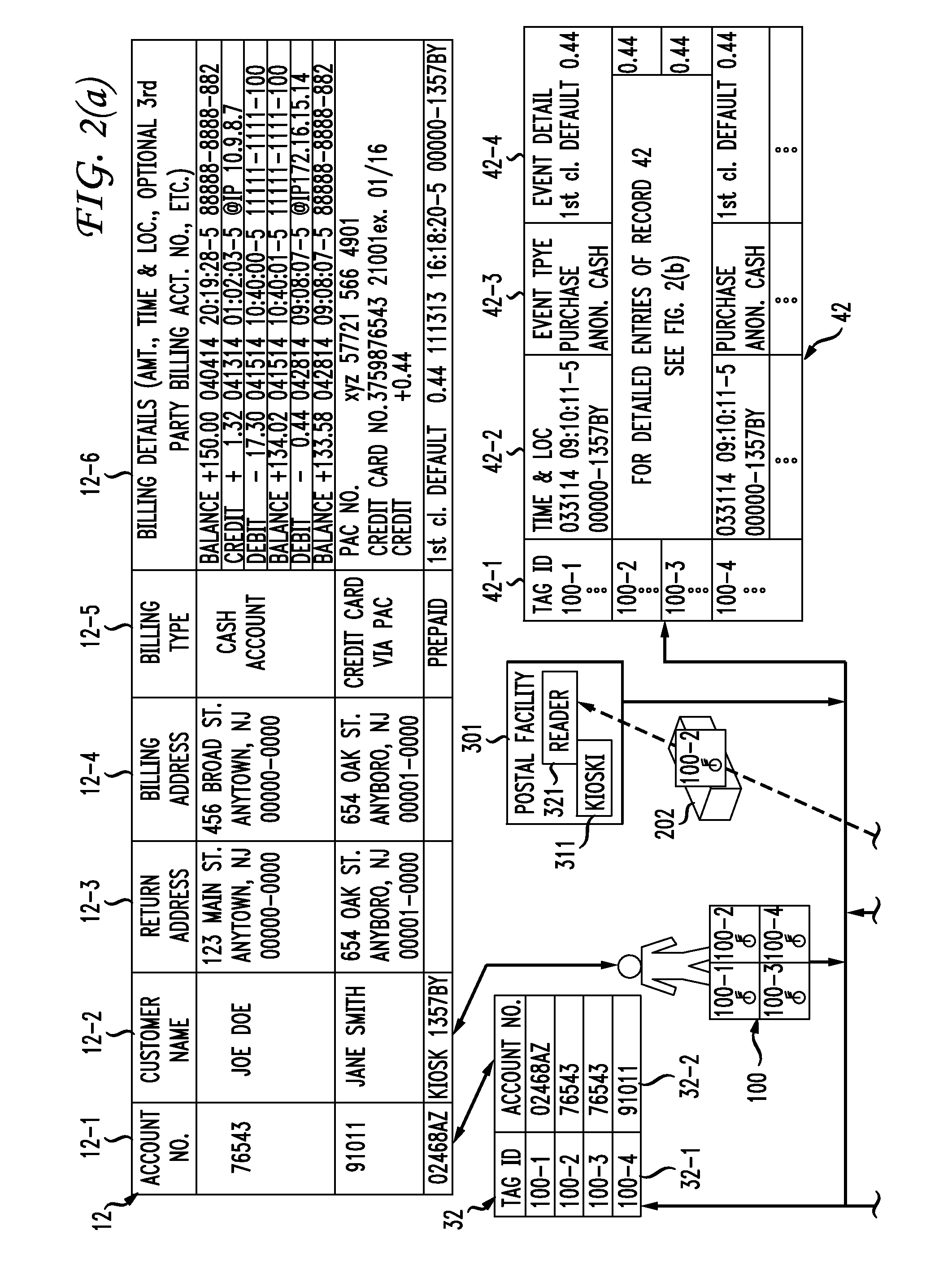Passive RFID postage stamps and method of using the same
a postage stamp and passive technology, applied in the field of system and method of postage payment, can solve the problems of inconvenience and expense for both the customer and the postal entity, and the customer is often unable to determine the proper postage required for an item being mailed, so as to improve the efficiency of the sorting process, improve service reliability, and avoid the effect of increasing time or labor
- Summary
- Abstract
- Description
- Claims
- Application Information
AI Technical Summary
Benefits of technology
Problems solved by technology
Method used
Image
Examples
Embodiment Construction
[0045]In general, radio-frequency identification (RFID) is an automatic identification method that relies on storing and remotely retrieving data from a device referred to as an RFID “tag” or “transponder”. An RFID tag comprises an object that may be applied to, or incorporated in, an element for the purpose of identification using radio waves. In the system of the present invention, the RFID tag takes the form of (for example) a postage stamp, or an equivalent instrument authorizing a delivery service (hereinafter generally referred to as an “RFID stamp” for sake of simplicity). An RFID “reader” or “interrogator”, when located within a predetermined distance of the tag (here, RFID stamp), will energize the tag / stamp to retrieve the stored data.
[0046]Most RFID tags comprise two elements: a processor module for storing the data, and an antenna for receiving and transmitting an RF signal. The system of the present invention utilizes so-called “passive” RFID tags; that is, tags that re...
PUM
 Login to View More
Login to View More Abstract
Description
Claims
Application Information
 Login to View More
Login to View More - R&D
- Intellectual Property
- Life Sciences
- Materials
- Tech Scout
- Unparalleled Data Quality
- Higher Quality Content
- 60% Fewer Hallucinations
Browse by: Latest US Patents, China's latest patents, Technical Efficacy Thesaurus, Application Domain, Technology Topic, Popular Technical Reports.
© 2025 PatSnap. All rights reserved.Legal|Privacy policy|Modern Slavery Act Transparency Statement|Sitemap|About US| Contact US: help@patsnap.com



